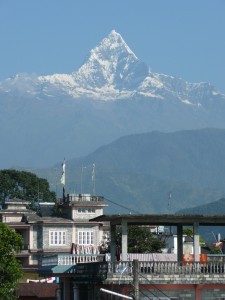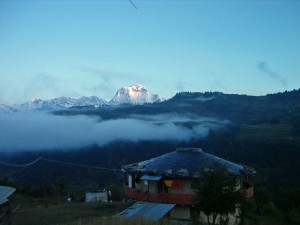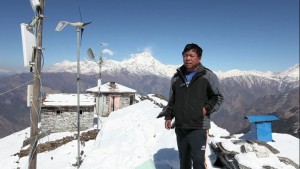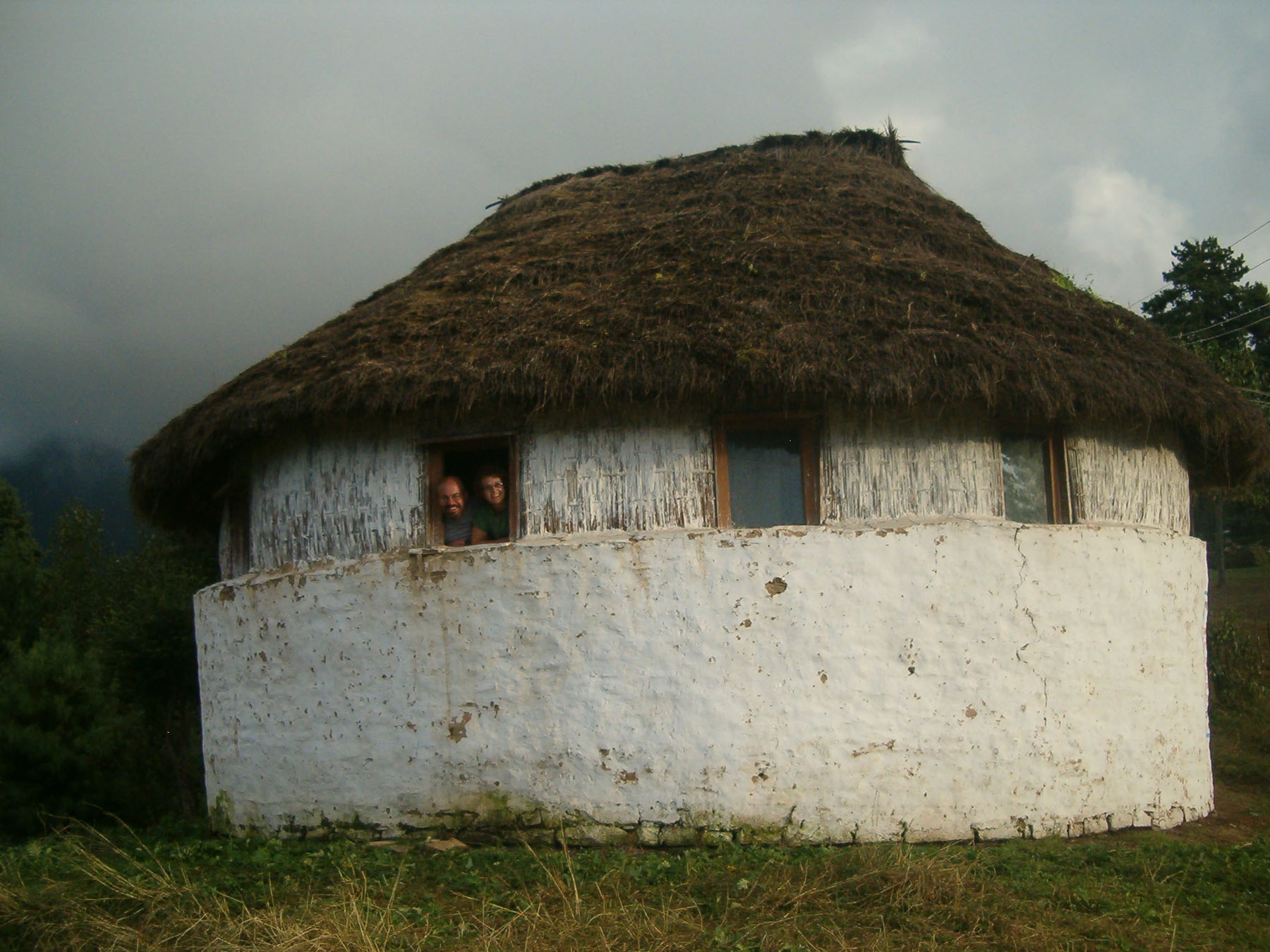For the last three weeks I have been traveling around central Nepal collecting information for the book. My travels have taken me from hectic Kathmandu to peaceful Pokhara to welcoming Nangi to the cold isolated mountainous Annapurna region called Mohare Danda, elevation 10,827 feet, to the flat southern region called the terai. On this journey I have interviewed people as varied as Ommaya, Mahabir’s wife who was born in a neighboring village; Saroj, an old Kathmandu high school friend; and Francis from California who only met Mahabir a few months ago.
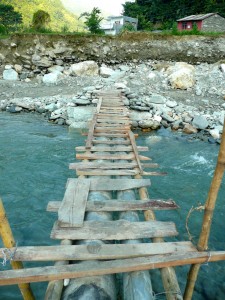
How to negotiate a washed out road…balance your backpack, stare straight ahead and pray the local bridge engineer had lots of experience.
Visiting Nangi, Mahabir’s birthplace and site of his first social endeavors, has given me insights into his past. I was able to photograph the location of his birth and early years, the site of his former school and even the worn stone steps he walked daily to that small school taught by informally educated village elders. I interviewed teachers who worked with him for years and newer teachers just starting their careers. I would sit on a small hill just above the school and contemplate the changes that have occurred over the years in Nangi. Mentally I compared Nangi to other villages I walked through or visited. These villages are affected by the encroaching roads and modernization but not to the extent of Nangi. The pace of life in those villages isn’t driven by a man who sees only the future…it is driven by the need to survive. Although changes have occurred, such as seeing people with cell phones, for the most part, the people who live in those villages live as their ancestors did a century ago.
But in Nangi the changes are palpable, even over the short 10 years since I have been coming. Spearheaded by one man’s dream but carried forward by so many others the question I ask myself is this: Is this one man’s dream or a compilation of many individual dreams shouldered by one man? Leadership demands creative humility but also an egotistical self-confidence…I have been searching for answers as to how this man balances the two. What I have uncovered is both a simple unidirectional man determined at all costs to move forward in a linear fashion with his dream and a complex man who moves in so many directions it is impossible to track.
To understand my passion for the book is to understand my passion for Nepal. It is both exhilarating and depressing, energizing and exhausting, satisfying and frustrating. Adjectives I can easily apply to Mahabir. Over the next few weeks I plan to tell the story of my visit in more detail and in pictures. So stop back and see the scope of my work and travels…I promise to tweak your interest, vibrate your heartstrings and incite your sense of humor.

